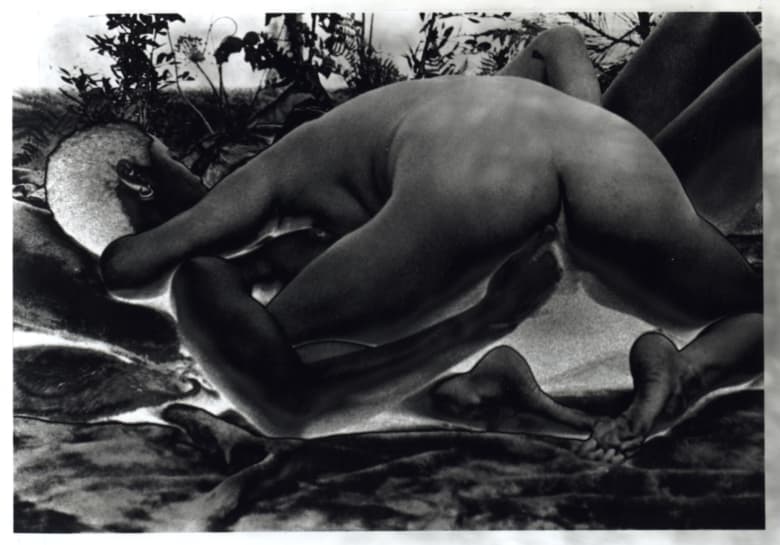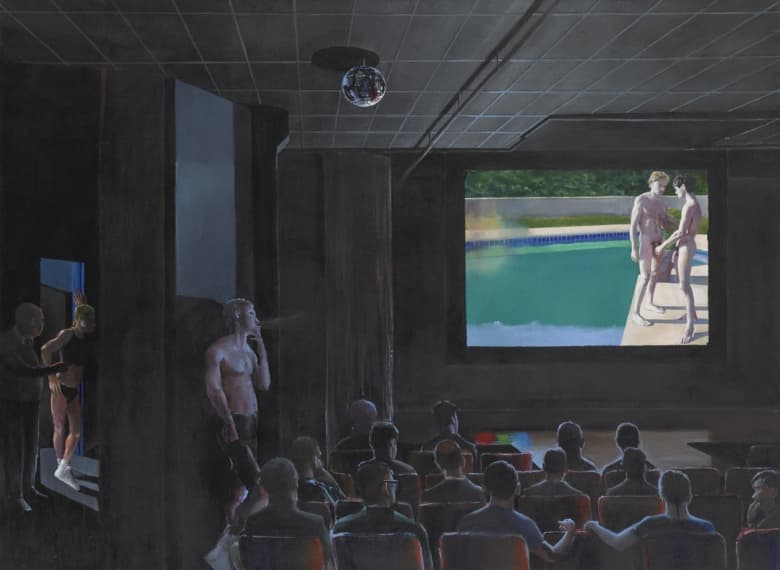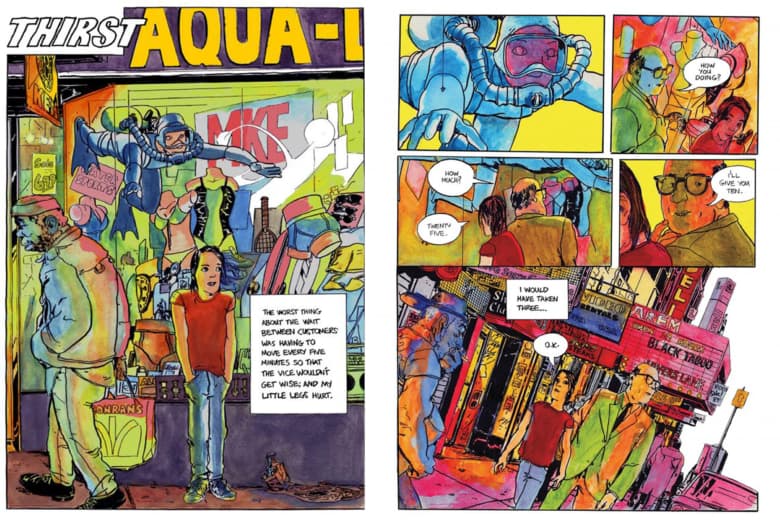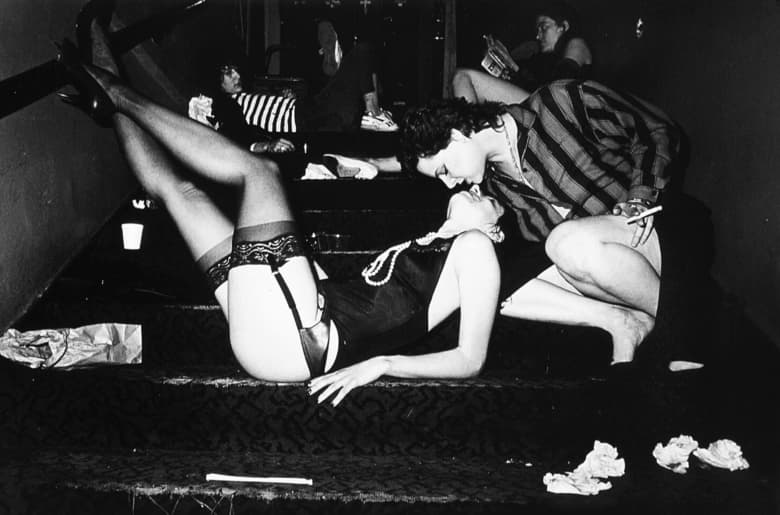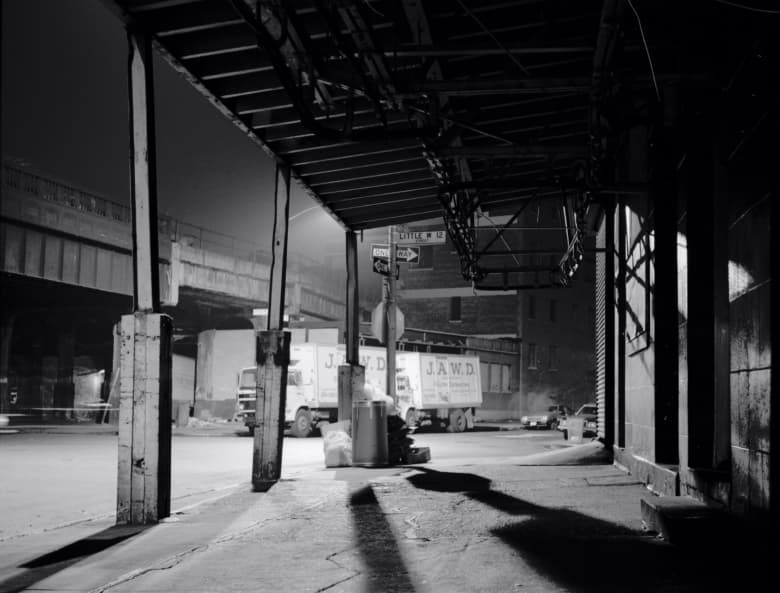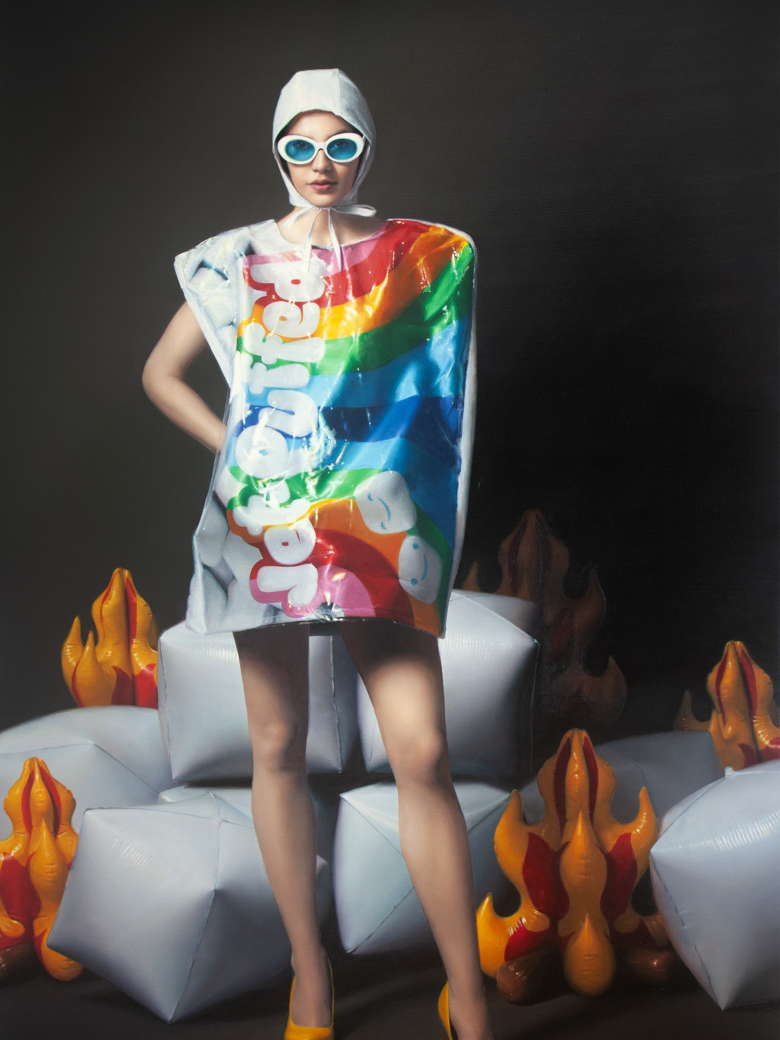Inside the exhibition exploring the “revolutionary art of queer sex work”
“All I had seen in art and culture was sex work being presented as titillation or as a ‘problem’ or ‘debate’” says Alexis Heller, the curator of new exhibition “ON OUR BACKS: The Revolutionary Art of Queer Sex Work”. However, through her work as a social worker supporting young LGBTQ+ sex workers, she realised that these representations are dangerously reductive and disengaged from reality. “There’s actually a really strong and powerful history of activism and community-building,’ she tells HUNGER; “I felt that that story needed to be told.”
This realisation led to the five-year process of working on and curating ON OUR BACKS, which brings together work by the likes of Tee Corinne, Bruce LaBruce, Robert Mapplethorpe, Annie Sprinkle and David Wojnarowicz with works from queer porn producer Pink + White Productions, headed up by director Shine Louise Houston. Through this diverse corpus, produced by artists who have been involved in the industry and their allies, Heller and the Leslie-Lohman Museum hope to provide visitors with a greater insight into the ways that the sex worker communication has been at the forefront of struggles for racial justice, HIV education and awareness, labour rights and gender equality advocacy.
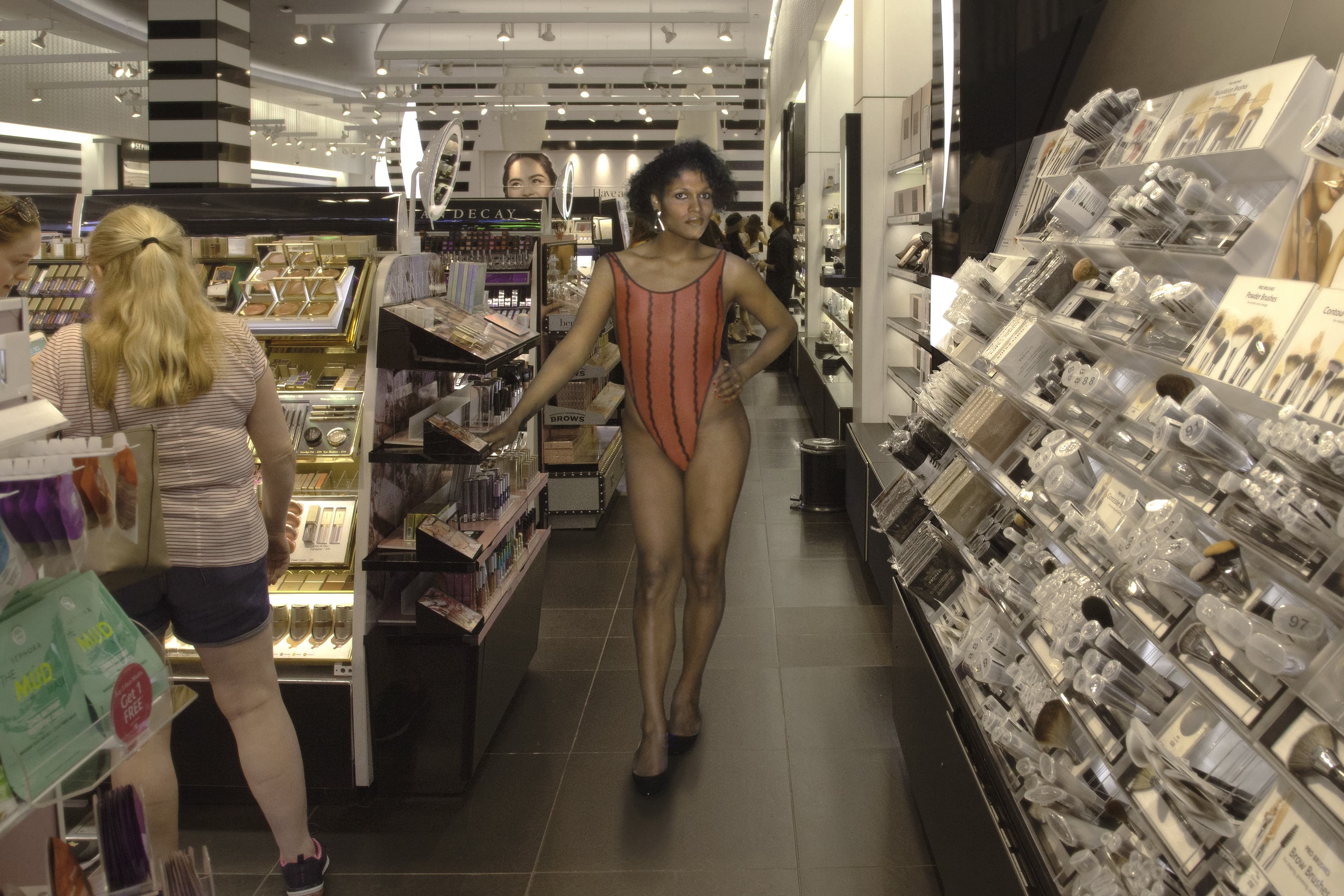
This process begins before you even enter the door, with the exhibition’s title. Many will recognise it from the lesbian erotic magazine of the same name and the show features vintage copies, as well as a slew of artists who have either acted as photographers for the publication or been featured within its pages. However, the exhibition’s name is also a reference to This Bridge Called My Back, an iconic essay anthology edited by Chicana feminists Cherríe Moraga and Gloria E. Anzaldúa. Critiquing the uncritical whiteness of mainstream iterations of the feminist movement (a conversation which continues to this day) it demonstrated the overlooked contributions of women of colour to the field. In a similar way, ON OUR BACKS hopes to celebrate under appreciated trailblazers and demonstrate that, as Heller puts it, “sex workers have helped carry forward various social justice movements.”
Heller’s comments are echoed by Gonzalo Casals, Executive Director of the Leslie-Lohman Museum. “Sex work has historically been at the core of queer cultural production and activism, yet has been too often omitted from the walls of the museum. It is a pleasure to rectify that misstep with a curated selection of essential works,” he says. “It is a vital reminder that our community is inseparable and that by uplifting the narratives of queer and transgender sex workers, we uplift the entire queer community.” In order to make sure that the ON OUR BACKS did the queer sex worker community justice, sex worker activists Ceyenne Doroshaw, Carol Leigh and Yin Q served as Advisors to the process of creating the exhibition. For those of you not based stateside, HUNGER rounds up some of the key works from this ground-breaking showcase, so you can see just what you’re missing.

Ben Cuevas, Reinserted series
Visual artist Ben Cuevas is primarily known for his textile works, in particular, tackle-knitted pieces representing the blood and bones of the human body in new, unfamiliar ways. Working to destigmatise and raise awareness of HIV within his work, some readers may also recognise his baby blue, knitted PrEP (Pre-Exposure Prophylaxis) pillows. However, he makes a departure for ON OUR BACKS, showing works from his Reinserted series. Drawing from the archives, he recontextualises portraits of sex workers lensed by Annie Sprinkles; moving them from cruising spots of years past and placing them within more banal and more intrinsically capitalist venues like shopping centres. The series’ logic is to highlight the ways that gentrification has endangered sex workers’ livelihoods by stripping away their places of work, particularly in a post-FOSTA-SESTA environment in which digital crackdowns have made it exceedingly difficult for sex workers to carve their own space.
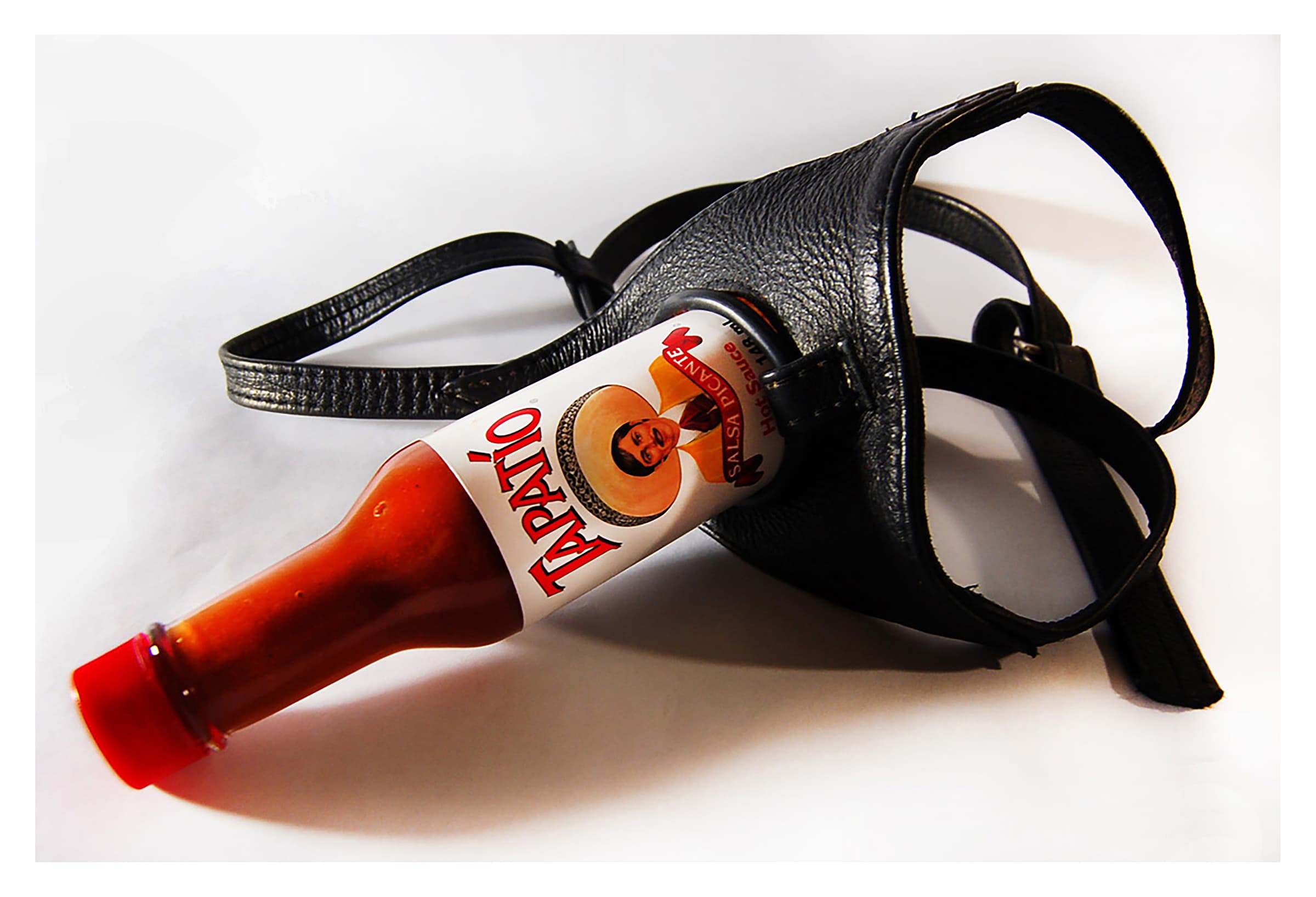
Xandra Ibarra – Tapatio Cock
Xandra Ibarra, aka la Chica Boom, is an Oakland-based performance artist whose work explores culture, ethnicity and sexuality whilst deconstructing the unquestioned cultural value held by white femininity via works such as “Nude Laughing“. Through the use of burlesque-style performance within the gallery space, she tests the imposed boundaries between “proper” and “improper” behaviour, particularly as a subject that is racialised and abjected by the white supremacy shaping society in the Global North. With Tapatio Cock she plays with reductive fetishism of Latinx masculinity, placing a phallic bottle of Tapatío hot sauce (a recurrent symbol in her work) in a leather harness. As a queer artist, the image is also a playful representation of queer Mexicanidad and the downturned bottle serves to open space towards alternate, non-phallocentric expressions of sexuality.
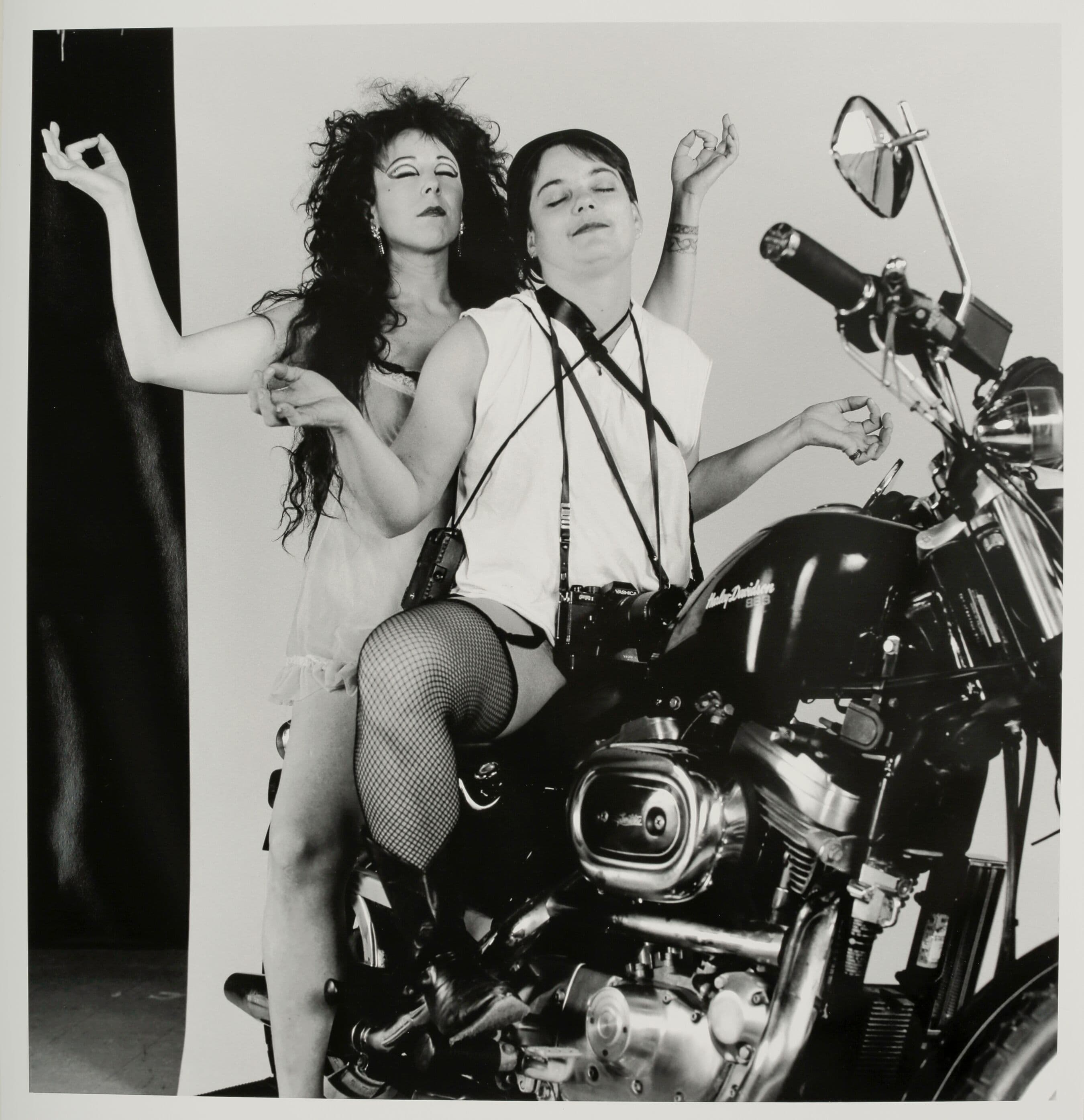
Beth Stephens, “Who’s Zoomin’ Who?”
Beth Stephens and Annie Sprinkles are artists, life partners and professors who work passionately for climate justice as part of the ecosexuality movement. Sprinkles is best known as a groundbreaking performance artist who, coming from a background in sex work, reclaimed the agency of the female figure within art. Stephens’ Who’s Zoomin’ Who? photographic series flips the male gaze on its head by placing Sprinkles in typically “masculine” scenarios of freedom. In doing so, Sprinkles and Stephens appropriate male symbols of power and sexuality (chiefly motorcycles) in order to pave the way for new visions of the female figure in art and photography.
ON OUR BACKS: The Revolutionary Art of Queer Sex Work is at New York’s Leslie-Lohman Museum until 19 January. See more images from the exhibition below.
